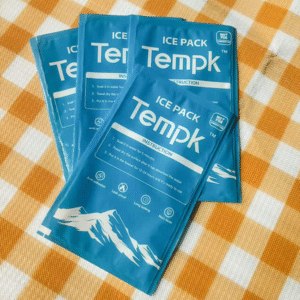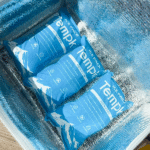Entrega de bolsas de hielo seco: Cómo garantizar un envío seguro y eficiente?
Shipping temperature-sensitive goods requires a reliable cooling solution, y paquetes de hielo seco are a top choice. These packs ensure your products stay frozen during transit, preserving their quality and integrity. Si envía alimentos perecederos, suministros médicos, o productos farmacéuticos, understanding the proper use of dry ice is crucial for efficient and safe delivery. This guide will walk you through everything you need to know to ensure your dry ice shipping process is seamless and compliant with industry standards.
-
Cuáles son paquetes de hielo seco y como funcionan?
-
¿Cómo elegir la bolsa de hielo seco adecuada para su envío??
-
What safety measures should you follow when shipping with dry ice?
-
How can you ensure dry ice effectiveness during delivery?
¿Qué son las paquetes de hielo seco y cómo funcionan??
Dry ice packs are solidified carbon dioxide (Co₂) that sublimates at a temperature of -78.5°C (-109.3°F). A diferencia del hielo normal, dry ice doesn’t melt into liquid but transforms directly into gas, making it ideal for shipping temperature-sensitive goods without creating water damage. This property makes dry ice particularly useful for perishable items, productos farmaceuticos, muestras biológicas, and food products that need to stay frozen or chilled during transit.
Dry ice packs are also favored for their ability to maintain temperatures without leaking liquid, providing a dry, mess-free solution for your shipments. Whether you are transporting vaccines or frozen seafood, using the right dry ice pack ensures that your goods remain in their optimal condition.
Characteristics of Dry Ice
| Característica | Descripción | Lo que significa para ti |
|---|---|---|
| Temperatura | Sublimate a -78.5 ° C | Keeps items frozen during transit |
| Tasa de sublimación | 5-10 libras cada 24 horas | Helps you determine when to replace packs |
| Regulaciones | Subject to DOT & reglas IATA | Ensures compliance and avoids legal issues |
How Do You Select the Right Dry Ice Pack for Shipping?
Choosing the right dry ice pack is essential for maintaining the correct temperature throughout the shipping process. Considere los siguientes factores:
1. Product Type and Temperature Sensitivity
Algunos artículos, como las vacunas, require extended freezing periods, mientras que otros, like food products, may need only short-term cooling. Understanding your product’s specific temperature needs will help you select the appropriate dry ice pack.
2. Duración de envío
Para envíos más largos, you may need larger or multiple dry ice packs. Por ejemplo, a short 24-hour shipment may only require a small amount, while longer shipments may need 10-20 lbs of dry ice to maintain the necessary temperatures.
3. Size of the Shipping Container
Ensure the dry ice fits within the container without jeopardizing the integrity of the product. Too much dry ice can cause unnecessary pressure buildup, while too little may not effectively maintain the cold chain.
Best Practices for Ensuring Dry Ice Effectiveness During Delivery
Utilice embalaje aislado
To maximize the longevity of dry ice, always package your goods in insulated containers. This helps slow down the sublimation process and ensures the dry ice lasts for the entire shipping period.
Monitor Temperature with Sensors
Many shipping services offer temperature sensors, which can help track the effectiveness of dry ice during transit. These sensors alert you if the temperature falls outside the acceptable range, ensuring that the shipment stays within the required temperature window.
Elija el tamaño correcto
Bigger isn’t always better. The size of the dry ice pack should match the shipment’s duration and the temperature sensitivity of the goods. Avoid over-packing, as this could lead to excessive sublimation and unnecessary waste.
Estudio de caso:
A pharmaceutical company recently upgraded their shipping practices by using dry ice packs for global deliveries. Como resultado, they reduced product spoilage by 40%, ensuring that vital medical supplies arrived in perfect condition.
How to Safely Handle and Store Dry Ice
Handling dry ice requires precautions due to its extremely low temperatures and potential health hazards.
Key Safety Measures for Using Dry Ice:
-
Ventilación adecuada: Always store dry ice in well-ventilated areas to prevent the buildup of CO₂ gas, which can displace oxygen in confined spaces and cause suffocation.
-
Equipo de protección: Always wear insulated gloves and goggles when handling dry ice to avoid frostbite and eye injuries.
-
Desecho: Allow dry ice to sublimate in an open outdoor area. Never dispose of it in small or enclosed spaces.
| Safety Guideline | Acción | Por qué es importante |
|---|---|---|
| Ventilación | Store in areas with good airflow | Prevent CO₂ buildup and suffocation |
| Equipo de protección | Utilice guantes y gafas | Avoid frostbite and injuries |
| Desecho | Let it sublimate in open air | Prevent hazardous buildup in closed spaces |
2025 Trends and Developments in Dry Ice Shipping
The world of dry ice shipping is rapidly evolving, with new trends and technologies improving efficiency, seguridad, y sostenibilidad.
Tendencias emergentes en el transporte marítimo con hielo seco:
-
Sistemas de monitoreo inteligentes: Real-time temperature tracking systems are becoming more prevalent, alerting users if the shipment’s temperature falls outside the acceptable range.
-
Blockchain for Cold Chain: The use of blockchain ensures greater transparency and traceability in dry ice shipping, particularly for high-value pharmaceutical shipments.
-
Aislamiento ecológico: Companies are developing more sustainable packaging materials that reduce the amount of dry ice required, contributing to both cost savings and environmental benefits.
Ideas del mercado: Cold Chain Logistics in 2025
With the global demand for cold chain logistics rising, the market for dry ice solutions is expected to grow significantly. Por 2025, se prevé que el mercado alcance $500 mil millones, driven by increasing demand for fresh food, biológicos, y otros productos sensibles a la temperatura.
Preguntas frecuentes
Q1: ¿Cuánto tiempo durará el hielo seco durante el envío??
El hielo seco generalmente dura entre 24 y 48 horas, dependiendo del tamaño y aislamiento. Los paquetes más grandes duran más, while smaller ones are better for shorter shipping times.
Q2: ¿Puedo enviar hielo seco a nivel internacional??
Sí, El hielo seco se puede enviar internacionalmente., but it must comply with specific regulations such as IATA guidelines for air transport and PUNTO regulations for ground shipping.
Q3: ¿Cómo calculo cuánto hielo seco necesito??
Calculate the amount of dry ice based on the shipment size, duración, and insulation type. Una guía general es 5-10 libras de hielo seco por 24 horas de envío.
Conclusión y recomendaciones
Dry ice packs are indispensable for shipping perishable goods and ensuring product quality during transit. Siguiendo las mejores prácticas, selecting the right pack, y respetando las normas de seguridad, you can confidently ship temperature-sensitive products without worrying about spoilage.
Siguientes pasos:
-
Evalúe sus necesidades de envío: Determine los requisitos de temperatura de su producto y la duración del envío..
-
Educate Your Team: Ensure your team is trained in the safe handling of dry ice.
-
Monitor Technological Advancements: Stay updated on new technologies to improve efficiency and reduce waste.
Acerca de Tempk
En Templ, we provide high-quality dry ice solutions designed to meet the needs of various industries. With years of experience in cold chain logistics, our dry ice packs ensure your goods remain safe and cold, No importa la distancia. Let us help you streamline your shipping process!
For more information on our dry ice shipping solutions, Contáctenos hoy!
























